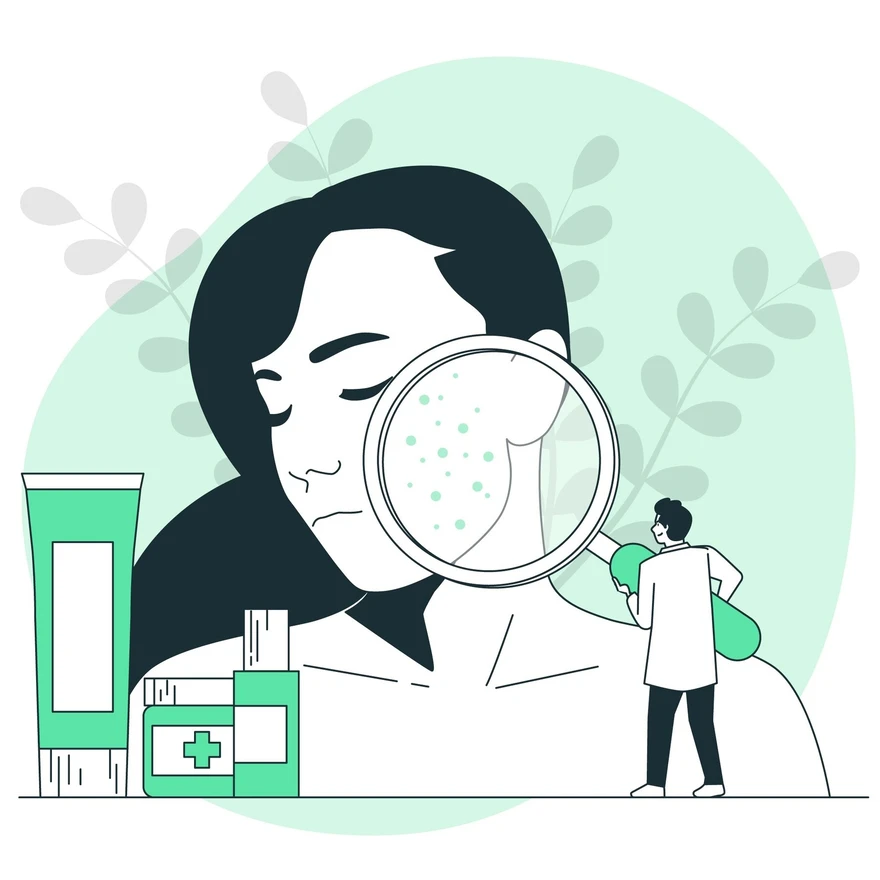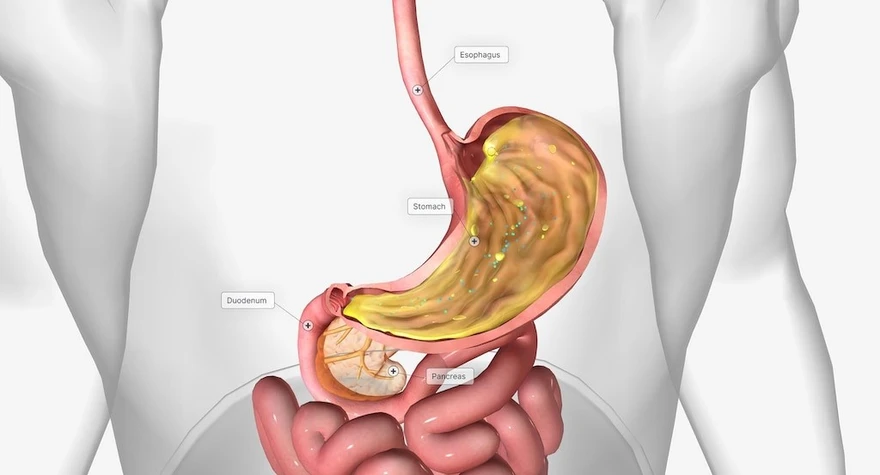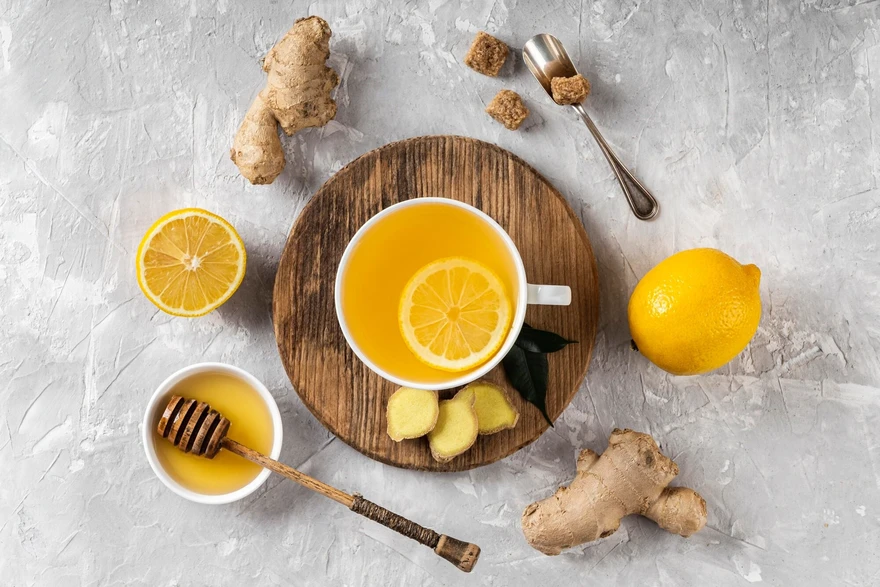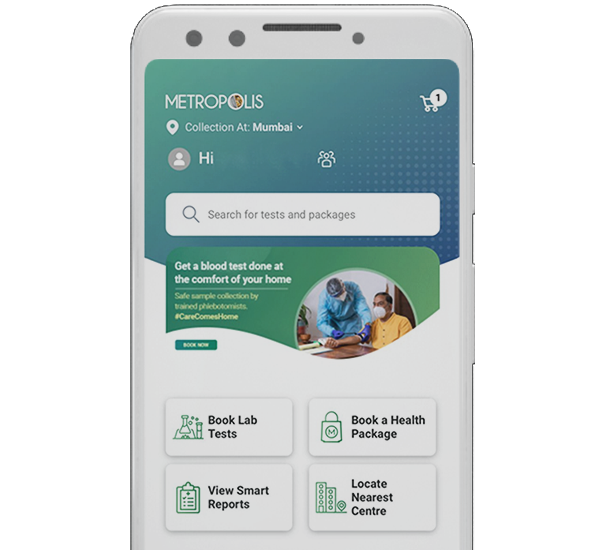Latest Blogs
Everything You Need to Know About Buerger’s Disease
Introduction Living with Buerger's disease can be intimidating, but understanding it is the first step to manage it effectively. This guide to Buerger's disease provides essential insight into the disease, covering it's symptoms, causes, diagnosis, treatment, and self-care strategies. Whether you are recently diagnosed or seeking more information, this full resource aims to give you knowledge and support to navigate your trip with Buerger's disease. What Is Buerger’s Disease? Buerger's disease, or thromboangiitis obliterans, is a non-atherosclerotic (group of abnormalities in the coronary arteries) inflammatory disease that primarily affects small and medium-sized arteries, commonly in the limbs. This results in progressive vessel occlusion (cerebral vessels become progressively occluded, leading to insufficient perfusion of brain tissue), leading to ischemia (blood flow (and thus oxygen) is restricted or reduced in a body part) and tissue damage, which is often associated with smoking. What Are The Symptoms Of Buerger’s Disease? Common symptoms of Buerger’s disease include: Ischemic rest pain : Severe pain in the hands or feet, which often occurs during taking a rest due to Buerger's disease. Claudication: Muscle cramps due to insufficient blood flow, usually in the calf muscle, are a symptom of Buerger's disease. Raynaud's phenomenon: Changes in the color of the skin of the fingers or toes, appearing as red, blue, or pale discoloration, are also important symptoms of Buerger's disease to watch out for. Numbness or tingling: Numbness or tingling in the fingers or toes caused by Buerger's disease. Ulcerations: Open sores or wounds on the toes, feet, or fingers, often due to poor circulation, may indicate Buerger's disease. What Causes Buerger’s Disease? Buerger's disease is caused by inflammation in the small and medium-sized blood vessels. The exact Buerger's disease cause remains unclear, but several factors can contribute to its development. Some potential contributing Buerger's disease causes include: Tobacco consumption, particularly smoking, is the main risk factor. Genetic factors may play a role, as the disease is more common in certain ethnic groups. Abnormalities of the immune system leading to inflammation of the blood vessels are believed to be the cause. Some researchers believe that Buerger's disease may result from an abnormal reaction to tobacco or other environmental exposures. What Are The Risk Factors For Buerger’s Disease? Common risk factors for Buerger’s disease include: Smoking: Smoking is the most important risk factor for Burger's disease, and almost all those affected are current or former smokers. Age: Buerger’s disease usuallyoccurs before the age of 50. Arterial occlusions: Presence of infrapopliteal arterial occlusions (a condition that can lead to critical limb ischaemia (CLI), a potentially life-threatening disease affecting the limbs), especially in the lower limbs. Limb involvement: The risk increases either with involvement of the upper limb or with phlebitis migrans, a form of migratory thrombophlebitis. Other risk factors: Other risk factors of Buerger's disease may includegenetic predisposition, autoimmune response, or hypersensitivity to tobacco components. What Are The Complications Of Buerger’s Disease? Complications of Buerger’s disease include: Gangrene: Tissue death due to lack of blood flow, leading to blackening and decay. Ulcerations: Open sores or ulcers may develop on the fingers and toes, which are particularly susceptible to infection. Infection: Secondary infections can develop due to Buerger’s disease in the ulcerated areas, which can lead to serious complications. Amputation: In severe cases, affected fingers or limbs may need to be surgically removed. Systemic complications such as occlusion of coronary, splenic, renal, or mesenteric arteries may arise rarely. How Is Buerger’s Disease Diagnosed? Buerger’s disease is diagnosed through a combination of clinical assessments, like medical history review, and diagnostic tests: Clinical Examination: The diagnosis of Buerger's disease usually begins with a thorough clinical examination, focusing on symptoms such as ischemic ischemic rest pain, claudication, and characteristic skin changes. Medical history: A detailed history of Buerger's disease, including smoking habits and other Buerger's disease risk factors, helps in making the diagnosis. Physical Examination: Examination may reveal decreased or absent pulses, cold extremities, and signs of tissue ischemia, aiding in the diagnosis. Differential Diagnosis: Buerger's disease must be differentiated from other conditions causing peripheral vascular disease, such as atherosclerosis and vasculitis. What Tests Will Be Done To Diagnose Buerger’s Disease? For Buerger's disease diagnosis, several tests may be conducted: Vascular Tests: Buerger's tests assess the blood flow and may include Doppler ultrasound to evaluate arterial blood flow velocity and waveform characteristics. Imaging Studies: Angiography or magnetic resonance angiography (MRA) may be performed to visualize blood vessels and detect any abnormalities, such as arterial blockages. Laboratory Tests: While there are no specific buerger tests for daignoses, a comprehensive serology may be performed to rule out other conditions. Urine Test: A urine test may also be performed to assess kidney function and rule out other possible causes of buergers disease symptoms. How Is Buerger’s Disease Treated? Buerger's disease treatment includes: Smoking Cessation: Immediate cessation of tobacco use is crucial to halt Buerger's disease progression. Medications: Antiplatelet agents and vasodilators may be prescribed to improve the blood flow and manage Buerger's disease symptoms. Surgery: In severe cases of Buerger's disease, surgical intervention such as sympathectomy or bypass grafts may be required to restore blood flow. Wound care: Ulcer management and wound care are essential for Buerger's disease treatment disease to prevent infection and tissue damage. What Medications Are Used For Buerger’s Disease? Medications commonly used for Buerger’s disease include: Vasodilators: Vasodilators such as calcium channel blockers, can be used to improve the blood flow. Antiplatelet Agents: Anti-platelet agents Like cilostazol and clopidogrel, are used to prevent the platelet aggregation and improve circulation. Pentoxifylline: Pentoxifylline a medication that improves blood flow by decreasing its viscosity and enhancing its ability to flow through the blood vessels. Prostacyclin and Prostaglandin Derivatives: May also be prescribed to improve the blood flow and Buerger's disease. What Treatments Are Used For Buerger’s Disease? Treatment approaches for Buerger’s disease include: Lifestyle Changes Cessation of tobacco use: Complete discontinuation of all forms of tobacco, including cigarettes, electronic cigarettes, vaping, and marijuana, is imperative. Pharmacotherapy Antihypertensive agents: Medications to enhance blood flow by reducing blood pressure Antiplatelet therapy: Administration of aspirin to prevent thrombus formation Endothelin receptor antagonist: Use of bosentan (Tracleer) for severe cases to augment blood flow Therapeutic Interventions Intermittent pneumatic compression: Application of periodic mechanical pressure to the affected limbs to improve circulation Surgical Management Amputation: Surgical removal of necrotic or severely infected limbs in advanced cases. Adjunctive Measures Regular physical activity: Approved exercises to promote vascular health Dermal surveillance: Routine inspection and care of skin to prevent and manage infections Oral hygiene maintenance: Regular dental check-ups to mitigate the risk of periodontal disease Avoidance of secondhand smoke: Steering clear of all forms of passive smoke exposure What Are The Side Effects Of The Treatment? Side effects of treatments can vary depending on the specific medication or therapy used. Common side effects of Buerger's disease may include: Gastrointestinal Disturbances: Such as nausea, vomiting, diarrhoea, or constipation because of Buerger's disease. Cardiovascular Effects: Including changes in blood pressure or heart rate. Hematological Abnormalities: Such as anemia, leukopenia, or thrombocytopenia. Neurological Symptoms: Such as dizziness, headache, or neuropathy. Dermatological Reactions: Such as rash, itching, or skin irritation. Musculoskeletal Complaints: Such as muscle weakness, joint pain, or bone pain. Metabolic Effects: Including changes in glucose levels, electrolyte imbalances, or weight gain/loss. Psychological Effects: Such as mood changes, anxiety, or depression. What Is The Outlook For Buerger’s Disease? For individuals with Buerger's disease, the outlook can be challenging, especially without tobacco cessation. However, quitting smoking and proper management can improve symptoms and slow disease progression. Supportive care and lifestyle changes, coupled with medical interventions, offer hope for a better quality of life and reduce Buerger's disease complications. How Do I Take Care Of Myself? To manage Buerger's disease, it's crucial to cease tobacco use completely. Follow doctors' recommendations for self-care. Adhere to a healthy lifestyle, including regular exercise and a balanced diet. Seek medical attention for any complications promptly. Surgical intervention may be necessary for severe cases of Buerger's disease. Conclusion In conclusion, understanding Buerger’s Disease is crucial for effectively managing its symptoms and improving quality of life. From recognizing early signs of Buerger's disease to seeking appropriate medical care and adopting lifestyle changes like smoking cessation, self-care plays a vital role. Metropolis Labs offers reliable blood testing services, including Buerger's disease pathology tests essential for diagnosing and monitoring Buerger’s Disease. With their convenient at-home sample collection and advanced diagnostic facilities, Metropolis Labs ensures accurate results and seamless healthcare experiences for individuals managing this condition. To learn more about Metropolis Labs and their comprehensive pathology services, visit Metropolis Labs.
Understanding Hiatal Hernia: Symptoms, Causes, and Treatment Strategies!
Introduction: Hiatal hernia—a condition that affects millions worldwide, often without them even realising it. Picture this: a small opening in the diaphragm allowing a portion of the stomach to slowly move into the chest cavity. It's a common occurrence, especially as we age, yet its impact can be profound. While some experience no symptoms, others grapple with acid reflux, chest pain, and difficulty swallowing, among other discomforts. In this article, we'll journey through the intricacies of hiatal hernia, shedding light on its symptoms, causes, and treatment options, empowering you to navigate this condition with knowledge and confidence. What is a Hiatal Hernia? A hiatal hernia happens when the part of your stomach pushes through the weak spot or opening in your diaphragm into the chest cavity. The diaphragm is a muscle barrier that separates your abdominal cavity from your chest cavity. What are the Different Hiatal Hernia Types? Hiatal hernias can be categorised into two main types: sliding hiatal hernia and paraoesophagheal hiatal hernia. Let's explore each hiatal hernia types in detail: Sliding Hiatal Hernia: This is the most common hiatal hernia type, accounting for around 95% of cases. In a sliding hiatal hernia, the junction where the oesophagus (food pipe) meets the stomach and the upper part of your stomach itself slides up into the chest through the hiatus, which is the opening in the diaphragm. This type of hernia is often associated with gastroesophageal reflux disease (GERD) (leaking of acid from your stomach into your oesophagus) because the movement of the stomach into the chest can weaken the lower oesophageal sphincter (LES)(a muscular ring that prevents stomach contents from moving back into the oesophagus), allowing stomach acid to reflux or enter back into the oesophagus. Symptoms of a sliding hiatal hernia can include heartburn, acid reflux, regurgitation, chest pain, and difficulty swallowing. Paraesophageal Hiatal Hernia: Paraesophageal hiatal hernia, also known as a rolling hiatal hernia, is less common but can be more serious than sliding hernias. In a paraoesophagheal hiatal hernia, the gastroesophageal junction remains in its normal position, but a portion of your stomach moves through the hiatus and sits beside the oesophagus in the chest cavity. Unlike sliding hernias, paraoesophagheal hernias do not typically cause GERD symptoms. Instead, they may lead to symptoms such as chest pain, difficulty swallowing, feeling full quickly, and anaemia due to bleeding from ulcers in the herniated stomach. Paraoesophageal hernias are also categorised into three subtypes: Type I: The gastroesophageal junction remains below the diaphragm, but a portion of the stomach moves into the chest cavity. Type II: Similar to Type I, but with the addition of other abdominal organs moving into the chest alongside the stomach. Type III: This is the most severe subtype, characterised by the presence of a large portion of the stomach and other abdominal organs moving into the chest cavity. What are Hiatal Hernia Symptoms? Hiatal hernia symptoms can vary from person to person but commonly include: Heartburn Chest pain Difficulty swallowing Sore throat Indigestion Burping Bad breath Dry cough Nausea These symptoms may worsen after eating, lying down, or bending over. What Causes a Hiatal Hernia? Hiatal hernias typically happen when there is a weakening or disruption of the muscles and tissues surrounding the hiatus, which is the opening in your diaphragm through which the oesophagus passes before connecting to the stomach. It is difficult to pinpoint single hiatal hernia causes as several factors such as ageing-related muscle weakening, obesity-induced abdominal pressure, pregnancy-related displacement of organs and hormonal changes, strain from heavy lifting or straining, congenital structural abnormalities, and injury-induced muscle weakening around the hiatus can be listed under hiatal hernia causes. What are the Risk Factors of Hiatal Hernia? Several factors increase the risk of developing hiatal hernia, including obesity, advanced age, smoking, and certain medical conditions such as persistent coughing or vomiting. Genetics may also be the risk factor behind this condition. How is a Hiatal Hernia Diagnosed? Diagnosing hiatal hernia typically involves a combination of medical history review, physical examination, and diagnostic tests. These hiatal hernia diagnostic tests include: Chest X-ray: It also known as a radiograph, utilises radiation to capture static, black-and-white images of the interior of your chest cavity, including the area where your oesophagus is located. Upper Endoscopy: In an upper endoscopy, a flexible tube with a camera on the end (endoscope) is inserted through the mouth and into the oesophagus, stomach, and duodenum. This allows your healthcare provider to directly visualise the oesophagus and stomach and identify any abnormalities, such as inflammation or irritation caused by acid reflux. Oesophageal pH Monitoring: Oesophageal pH monitoring measures the acidity levels in the oesophagus over a while. This test helps determine the frequency and severity of acid reflux episodes, providing valuable information about the extent of reflux-related symptoms and their impact on oesophageal health. Oesophageal Manometry: Oesophageal manometry evaluates the strength and coordination of the muscles in the oesophagus and lower oesophageal sphincter (LES). By measuring muscle contractions and relaxation, this test assesses the functionality of the LES and identifies any abnormalities in oesophageal motility that may contribute to hiatal hernia symptoms. What is the Treatment for a Hiatal Hernia? Hiatal hernia treatment aims to relieve symptoms and prevent complications. Depending on the severity of your condition, hiatal hernia treatment options may include medications and surgery. Medications: Over-the-counter and prescription hiatal hernia medications such as antacids, proton pump inhibitors (PPIs), and H2-receptor antagonists can help reduce acid production and reduce the symptoms of acid reflux and heartburn. Surgery: In cases where medications are ineffective, hiatal hernia surgery may be recommended to repair the hernia and strengthen the lower oesophageal sphincter (a muscular ring that prevents stomach contents from moving back into the oesophagus). Laparoscopic surgery is a minimally invasive approach that offers faster recovery and fewer complications compared to traditional open surgery. Hiatal Hernia Surgery Hiatal hernia surgery involves returning the stomach to its normal position and repairing the opening in the diaphragm. This procedure may also involve strengthening your lower oesophageal sphincter to prevent reflux. While recovery times may vary, most hiatal hernia patients can resume normal activities within a few weeks after surgery. How Can I Treat My Hiatal Hernia at Home? In addition to medical treatment, certain lifestyle modifications can help manage hiatal hernia symptoms effectively. These hiatal hernia self-care include maintaining a healthy weight, avoiding large meals, elevating the head of the bed while sleeping, and refraining from smoking and excessive alcohol consumption. Conclusion Living with hiatal hernia can be challenging, but with proper understanding and management, you can effectively reduce the symptoms and improve your quality of life. Remember to consult with your healthcare provider for personalised treatment recommendations suitable to your individual needs. At Metropolis Labs, we understand the importance of personalised care and convenience in managing health conditions like hiatal hernia. Our in-house visit services make it easy for you to get the necessary tests done from the comfort of your home, while our informative blogs provide valuable insights into various health topics.
मानसून सीजन में बालों का झड़ना कैसे रोकें
परिचय हम मानसून के मौसम को खुशियों, चिलचिलाती गर्मी से राहत और अविश्वसनीय सुंदरता से जोड़ते हैं। हालाँकि, यह मौसम कुछ अनचाहे मेहमानों को भी साथ लाता है जिन्हें हेयर फॉल कहते हैं। क्लाइमेट चेंज हमारे बालों पर बुरा असर डाल सकता है, जिससे उनके टूटने और झड़ने की संभावना बढ़ जाती है। लेकिन हमें बरसात के मौसम में इस बढ़े हुए बालों के झड़ने का अनुभव क्यों होता है? यह लेख मानसून के दौरान बालों के झड़ने के कारणों की जांच करके इन चिंताओं को संबोधित करता है और मानसून में बालों के झड़ने को रोकने के लिए प्रैक्टिकल टिप्स प्रदान करता है। मानसून में बाल क्यों झड़ते हैं? मानसून के दौरान, हमारे बाल बहुत कुछ सहते हैं - लगातार आर्द्रता (ह्यूमिडिटी) के संपर्क में रहने से लेकर मौसम की बदलती परिस्थितियों तक। परिणामस्वरूप, हमारे बाल कमजोर हो जाते हैं और टूटने लगते हैं। सामान्य परिस्थितियों में, एक औसत व्यक्ति एक दिन में लगभग 50-100 बाल खोता है, हालाँकि, मानसून के मौसम में यह संख्या बढ़कर 250 से अधिक हो सकती है! इस वृद्धि का मुख्य कारण वातावरण में उच्च आर्द्रता (ह्यूमिडिटी) स्तर की उपस्थिति है जिससे हमारे बाल हाइड्रोजन अवशोषित करते हैं। यह प्रक्रिया हमारे बालों को भंगुर और कमजोर बनाती है, जो सीधे मानसून के दौरान बालों के झड़ने में वृद्धि की ओर ले जाती है। इसके अतिरिक्त, आवश्यक तेलों की कमी और बारिश के पानी के संपर्क में आने से आपके बाल उलझ सकते हैं, जिससे बालों को और अधिक नुकसान होता है। मानसून में बालों के झड़ने के कारण आइए मानसून में बालों के झड़ने के कुछ सामान्य कारणों पर गहराई से विचार करें: - उच्च आर्द्रता (ह्यूमिडिटी): हवा में नमी की बढ़ी हुई मात्रा बालों को कमजोर कर देती है, जिससे वे टूटने और उलझने लगते हैं। - पसीना और गंदगी जमा होना: आर्द्र (ह्यूमिड) मौसम के कारण पसीना आता है, जो आगे गंदगी के साथ मिलकर बालों के रोमछिद्रों को बंद कर देता है और मानसून में बाल झड़ने का कारण बनता है। - फंगल संक्रमण: नम वातावरण स्कैल्प पर फफूंद की वृद्धि को बढ़ावा दे सकता है, जिससे रूसी जैसी समस्याएं पैदा हो सकती हैं, जो बालों के झड़ने का कारण बन सकती हैं। - एसिड रेन: बारिश के पानी में प्रदूषक इसे अम्लीय बना सकते हैं, जिससे बालों को नुकसान होता है और बालों का झड़ना बढ़ जाता है। - गीले बालों को संभालना: बाल गीले होने पर कमजोर होते हैं, और बार-बार गीला करने और सुखाने से वे आसानी से टूट सकते हैं। - खराब आहार: बरसात के मौसम के दौरान आहार संबंधी आदतों में बदलाव, जैसे ताजी सब्जियों और फलों का कम सेवन, बालों के स्वास्थ्य को प्रभावित कर सकता है। - तनाव और जीवनशैली में बदलाव: तनाव और जीवनशैली में बदलाव, जिसमें बदले हुए रूटीन और कम शारीरिक गतिविधि शामिल हैं, बालों के स्वास्थ्य को प्रभावित कर सकते हैं और मानसून में बालों के झड़ने में योगदान कर सकते हैं। मानसून में बालों की देखभाल कैसे करें? मानसून के मौसम में बालों को अतिरिक्त देखभाल की आवश्यकता होती है क्योंकि बढ़ी हुई आर्द्रता (ह्यूमिडिटी) फ्रिज़, स्कैल्प संक्रमण और बालों के झड़ने का कारण बन सकती है। मानसून में बालों के झड़ने को रोकने और स्वस्थ बाल बनाए रखने के लिए, उन्हें साफ और सूखा रखना, हल्के बालों की देखभाल उत्पादों का उपयोग करना और अत्यधिक स्टाइलिंग से बचना महत्वपूर्ण है। नियमित रूप से बालों में तेल लगाना और माइल्ड शैम्पू का उपयोग करने से बालों की प्राकृतिक नमी को बनाए रखने और नुकसान को रोकने में मदद मिल सकती है। इसके अतिरिक्त, बालों को बारिश के पानी से बचाने और स्टिफ हेयरस्टाइल से बचने से बालों और स्कैल्प पर तनाव कम हो सकता है। ऑयली बालों के लिए टिप्स - बार-बार धोना: अतिरिक्त तेल और गंदगी को हटाने के लिए अपने बालों को नियमित रूप से माइल्ड और क्लियर शैम्पू से धोएं। - भारी कंडीशनर से बचें: हल्के कंडीशनर का प्रयोग करें और सिर की त्वचा पर अतिरिक्त तेल जमा होने से बचाने के लिए केवल बालों के सिरे पर ही ध्यान केंद्रित करें। - ड्राई शैम्पू: बालों को धोने के बीच में अतिरिक्त तेल को सोखने के लिए ड्राई शैम्पू का प्रयोग करें ताकि आपके बाल ताजा दिखें। - ठंडे पानी से धोना: सिर के रोमछिद्रों को बंद करने और तेल के स्राव को कम करने के लिए अपने बालों को ठंडे पानी से धोएं। सूखे बालों के लिए टिप्स - हाइड्रेटिंग शैम्पू और कंडीशनर: खोई हुई नमी को वापस लाने और बालों को नमी प्रदान करने के लिए मॉइस्चराइजिंग शैम्पू और कंडीशनर का उपयोग करें। - नियमित तेल लगाना: सूखे बालों को पोषण देने और उन्हें मजबूत बनाने के लिए नियमित रूप से अपने बालों और सिर की त्वचा पर नारियल या जैतून जैसे प्राकृतिक तेल लगाएं। - हीट स्टाइलिंग को सीमित करें: अपने बालों को और अधिक सूखने से रोकने के लिए, हेयर ड्रायर, स्ट्रेटनर और कर्लिंग आयरन जैसे गर्म स्टाइलिंग टूल्स का अत्यधिक उपयोग करने से बचें। - लीव-इन कंडीशनर: अतिरिक्त नमी और फ्रिज़ के खिलाफ सुरक्षा प्रदान करने के लिए लीव-इन कंडीशनर या हेयर सीरम का उपयोग करें। मानसून में बालों के झड़ने को रोकने के टिप्स मानसून में बालों के झड़ने को रोकने के लिए यहां कुछ प्रभावी रणनीतियां दी गई हैं: - बाल धोने के बाद उन्हें प्राकृतिक रूप से सूखने दें। - खुरदुरे तौलिये के बजाय माइक्रोफाइबर तौलिये का उपयोग करें। - स्ट्रेटनर या कर्लर जैसे स्टाइलिंग टूल्स का अत्यधिक उपयोग करने से बचें। - अपने बालों को सुलझाने के लिए चौड़े दांतों वाली कंघी का उपयोग करें। - बारिश में बाहर निकलते समय अपने सिर और बालों को ढक कर रखें। - सिर की त्वचा को हाइड्रेट रखने के लिए नियमित रूप से बालों में तेल लगाएं। बाल झड़ने की प्रारंभिक स्क्रीनिंग क्यों महत्वपूर्ण है? बालों के झड़ने का शीघ्र पता लगाना महत्वपूर्ण है, क्योंकि इससे बालों के झड़ने के मूल कारण की शीघ्र पहचान करने में मदद मिल सकती है, जिससे शीघ्र हस्तक्षेप और उपचार संभव हो सकता है। बालों के झड़ने का प्रारंभिक पता लगाने से बालों के झड़ने को रोकने और उपचार की प्रभावशीलता बढ़ाने में मदद मिल सकती है। यह हार्मोनल असंतुलन, पोषण संबंधी कमी और स्कैल्प संक्रमण जैसी अंतर्निहित स्थितियों का निदान करने में भी मदद कर सकता है जो बालों के झड़ने का कारण हो सकती हैं। अक्सर पूछे जाने वाले प्रश्न (FAQs) क्या मानसून के दौरान बालों का झड़ना सामान्य है? हाँ, मानसून के मौसम में मौसम की बदलती परिस्थितियों और बढ़ी हुई आर्द्रता (ह्यूमिडिटी) के कारण बालों के झड़ने में वृद्धि का अनुभव होना सामान्य है। क्या मानसून में बालों का झड़ना बढ़ जाता है? हाँ, मानसून के दौरान उच्च आर्द्रता (ह्यूमिडिटी) और बार-बार मौसम परिवर्तन से बालों के झड़ने में वृद्धि हो सकती है। आप मानसून से संबंधित बालों की समस्याओं का इलाज कैसे कर सकते हैं? अपने स्कैल्प को साफ रखकर, अच्छी स्वच्छता बनाए रखकर, संतुलित आहार खाकर और हल्के बालों की देखभाल करने वाले उत्पादों का उपयोग करके, आप मानसून से संबंधित बालों की समस्याओं का प्रभावी ढंग से प्रबंधन कर सकते हैं। निष्कर्ष आपको मानसून में अत्यधिक बालों के झड़ने की चिंता करने की ज़रूरत नहीं है। इन जानकारियों और सुझावों के साथ, अब आप बरसात के मौसम में बालों के झड़ने को रोकने के लिए बेहतर तरीके से तैयार हैं ताकि आप बारिश का आनंद बिना बालों की चिंता किए ले सकें। याद रखें कि हर व्यक्ति के बाल अनोखे होते हैं; जो उपाय एक के लिए काम करता है वह दूसरे के लिए भी काम करें यह जरूरी नहीं है। इसलिए, व्यक्तिगत सलाह के लिए स्वास्थ्य सेवा प्रदाताओं से परामर्श करने की सिफारिश की जाती है। विभिन्न डायग्नोस्टिक्स और स्वास्थ्य जांच सेवाओं के बारे में अधिक जानकारी के लिए मेट्रोपोलिस लैब्स का पता लगाने पर विचार करें जो कई स्वास्थ्य चिंताओं का समाधान करती हैं। उनके घर पर नमूना संग्रह सेवा और उन्नत डायग्नोस्टिक लैब के साथ सटीक परिणाम सुनिश्चित करना, मेट्रोपोलिस हेल्थकेयर के साथ अपने स्वास्थ्य को प्राथमिकता देना संभव है!
Best Home Remedies for Common Monsoon Ailments
Introduction The monsoon season, along with its refreshing rains and cooler temperatures, brings a welcome respite from the scorching summer heat. However, it also ushers in a host of common ailments such as colds, coughs, fevers, and digestive issues. These ailments can dampen the joy of the rainy season, making it crucial to have effective remedies on hand. Fortunately, various home remedies for monsoon ailments can help us to deal with these health problems naturally and effectively. These monsoon home remedies uses simple ingredients from your kitchen to boost your immunity and keep you healthy throughout the season. Home Remedies for Monsoon Diseases Increased humidity and temperature changes during the rainy season can weaken the immune system, making the body more vulnerable to infections. To combat these symptoms, here are some effective home remedies for the rainy season that can help relieve symptoms and promote recovery. Turmeric Milk Turmeric milk, also known as ‘golden milk’, is a powerful remedy for monsoon ailments. Turmeric is known for its anti-inflammatory and antioxidant properties. Drinking a warm cup of turmeric milk can help soothe a sore throat, reduce inflammation and boost immunity. To prepare this remedy, add a teaspoon of turmeric powder to a glass of warm milk and drink it before bedtime. This traditional remedy not only provides comfort but also helps in faster recovery from colds and coughs. Neem Tea Neem tea is another powerful home remedy for monsoon ailments. Neem leaves possess strong antibacterial, antiviral, and antifungal properties, making them ideal for combating infections. To make neem tea, boil a handful of neem leaves in water for about 10 minutes, then strain and drink the tea. Regular consumption of neem tea helps detoxify the body, supports the immune system and prevents common monsoon diseases. Steam Inhalation Steam inhalation is an effective home remedy for colds in the rainy season. It helps clear nasal congestion, soothe irritated airways, and reduce sinus pressure. To perform steam inhalation, boil water in a pot, remove it from the heat, and lean over the pot with a towel draped over your head to trap the steam. Inhale deeply for 10-15 minutes. For an additional advantage, you can add a few drops of eucalyptus or peppermint oil to the water. This simple practice can cause immediate relief of the respiratory discomfort caused by cold and cough. Ginger Tea Ginger tea is known as a classic remedy for various monsoon ailments, particularly colds and digestive issues. Ginger has natural anti-inflammatory and antiviral properties that helps to reduce symptoms of colds and improve digestion. To prepare ginger tea, boil a few slices of fresh ginger in water for 5-10 minutes, then strain and add honey or lemon for taste. Drinking this tea two to three times a day can help soothe a sore throat, reduce congestion, and promote overall wellness during the rainy season. Consuming Hot Meals Consuming hot meals can be particularly comforting and beneficial during the monsoon season. Soups, broths, and herbal teas can help in keeping the body warm and hydrated while providing essential nutrients. Spices like black pepper, cumin, and cinnamon added to these hot foods can enhance their therapeutic effects. These spices have natural antimicrobial properties that can help fight infections and boost immunity. Incorporating hot foods into your diet is a simple yet effective way to utilise monsoon home remedies for maintaining good health. Mulethi Mulethi, also known as licorice root, is an excellent home remedy for cold in the rainy season. It consists of strong anti-inflammatory and immune-boosting properties. Mulethi is particularly effective in treating sore throats and coughs. To use mulethi, you can chew on a small piece of the root or prepare a tea by boiling it in water. Regular consumption of mulethi can help in soothing throat, reducing cough, and strengthening the immune system. Garlic Garlic is a powerful natural antibiotic that can help prevent and treat various monsoon diseases. Its antibacterial, antiviral and antifungal properties make it an essential ingredient in home remedies for monsoon illnesses. To get the benefits of garlic, you can eat garlic cloves raw or add them to your meals. For a tastier option, you can make garlic tea by boiling crushed garlic cloves in water and adding a little honey for taste. Regular consumption of garlic can help prevent infections and keep your immune system strong. Papaya Leaf Papaya leaf extract is a well-known remedy for increasing blood platelets and treating dengue fever, a common monsoon-related disease. Enzymes in papaya leaves, such as papain and chymopapain, help reduce inflammation and boost the immune system. To prepare papaya leaf juice, crush a few fresh papaya leaves and extract the juice. Drinking this juice twice a day can help control dengue symptoms and improve overall health during monsoons. Tulsi Leaves Tulsi or holy basil is revered for its medicinal properties and is a staple in home remedies for the rainy season. Tulsi leaves have antiviral, antibacterial and antifungal properties and are effective in treating respiratory infections and boosting immunity. You can chew fresh Tulsi leaves, make Tulsi tea or add Tulsi leaves to your meals. Tulsi tea can be made by boiling a few tulsi leaves in water and adding honey or lemon to taste. Regular consumption of tulsi can protect against common monsoon illnesses and promote respiratory health. Salt Water to Gargle Gargling with salt water is a simple yet an effective home remedy for cold in the rainy season. Salt water helps reduce throat inflammation, loosen mucus, and flush out irritants and pathogens. To prepare this remedy, dissolve half a teaspoon of salt in a glass of warm water and gargle for 30 seconds before spitting it out. Repeat this process two to three times a day for best results. This practice can provide immediate relief from sore throat and prevent infections from worsening. Conclusion Monsoon home remedies offer a natural and effective way to manage common ailments that arise during the rainy season. By incorporating these simple practices into your daily routine, you can boost your immunity, alleviate the symptoms, and enjoy the monsoon without the discomfort of frequent illnesses. Remember, although these home remedies may relieve symptoms, they are not a substitute for medical advice. If the symptoms still persist, seek help from a healthcare professional. Metropolis Labs offers reliable at-home blood testing and health check-up services to help diagnose any underlying conditions. Book an appointment today!
Best Foods to Boost Your Immunity During Monsoon
Introduction Since monsoon showers hydrates the dried earth, it brings along a feeling of refreshment and joy. However, we cannot miss the fact that our immune system also receives a hit during this season. With infections and illnesses becoming more common, the need for a strong immune system is increasing, but how can you boost your body's natural defence mechanisms? The secret lies in healthy food to eat in rainy season. This blog post aims to provide you with a comprehensive rainy season food list and guide you on the foods that can boost your immunity during the monsoon. Let’s dive in! Turmeric Turmeric often tops the list of foods that boost the immune system, especially during the monsoon season. This golden spice is rich source of curcumin, which has powerful anti-inflammatory properties. Including turmeric intake in your monsoon food diet can help you to fight off infections and illnesses which are common during this season. You can add a pinch of turmeric to your meals or enjoy a warm glass of turmeric milk before bed. Probiotics and Fermented Food Probiotics play an essential role in maintaining a good gut health, directly linked to strong immunity. Fermented foods like yogurt are rich in probiotics and are considered as an excellent rainy season healthy food. You can also consume pickles and sourdough bread as they are fermented and promote good gut bacteria growth. Soups and Stews There is nothing more comforting than a hot bowl of soup or stew on a cold, rainy day. Soups and stews made from fresh vegetables such as carrots, beans and tomatoes are not only delicious but are also rich in essential vitamins and minerals. They support a healthy immune system, making them a excellent rainy season foods to boost immunity. Lemon Lemons are a powerhouse of Vitamin C - a vital nutrient that enhances the body's ability to fight off infections. Whether squeezed over salads or added to warm water, lemons can easily be included in your rainy season food list for an immunity boost. Masala Chai Masala Chai is a popular monsoon food in India. Spices used in Masala Chai, such as ginger, cardamom and cinnamon, contains immune-boosting properties. Enjoying a cup of hot masala chai on a rainy day not only improves your mood but also strengthens your immune system. Garlic Garlic is known for it's medicinal properties. It contains allicin, which increases the disease-fighting response of some types of white blood cells in the body when they encounter viruses. Including garlic in your diet, is an effective way to increase immunity during monsoon. Ginger The warming effect of ginger makes it perfect for consumption during monsoons. It has anti-inflammatory properties that help relieve sore throats and fight flu symptoms. Add ginger to your tea or meals for extra strength and protection against monsoon ailments. Nuts and Dry Fruits Nuts and dry fruits such as almonds and walnuts are rich in essential vitamins and fatty acids that strengthen our immune system. Include them in your rainy season food list for a power-packed immunity boost. Bitter Gourd Bitter gourd may not be everyone's favourite vegetable due to its bitter taste, but it is very beneficial during monsoons. Being a rich source of vitamins, it helps boost immunity and is a must during monsoon. Foods to Avoid During the Monsoon During the monsoon season, it is crucial to be mindful of the foods you consume to avoid health issues. Here are some foods to avoid: Leafy Vegetables: Exposed to dirt and bacteria because of high moisture, which can lead to possible stomach infections Seafood: More vulnerable to contamination during their breeding season, increase the risk of food poisoning Fried and Oily Foods: Difficulty in digesting due the humid weather, can cause indigestion and bloating Street Food: Often lacks proper hygiene, posing a risk of water-borne diseases like typhoid and diarrhoea Pre-cut Fruits and Salads: Possibility of easy contamination with bacteria, it is safer to consume freshly cut versions at home Dairy Products: Due to humid conditions these products can spoil quickly, can lead to stomach infections if consumed when spoiled Raw food: Can contain bacteria and pathogens, so thorough cooking is essential Mushrooms: Can create a breeding ground for harmful bacteria that can cause allergic reactions or food poisoning Spicy Food: Increases body heat and digestive problems, it is better to choose mild spices Sour Food: Causes water retention and bloating, which can aggravate conditions like arthritis and joint pain Conclusion Maintaining a strong immune system is crucial, especially during the monsoon season when our bodies are more vulnerable to infections. By incorporating healthy food to eat in rainy season, you can better equip your body to fight off diseases. However, if you notice persistent symptoms or prolonged fever, it may indicate a possibility of infection. In such cases, you must consult a healthcare professional immediately. At Metropolis Labs, we are dedicated to helping you stay in the best of health with our comprehensive health check-up services. Our expert technicians provide at-home blood sample collection for your convenience. All samples are processed at our advanced diagnostic labs, ensuring accurate results every time. At Metropolis Healthcare, we believe that prioritising your health is within reach with the right knowledge and medical care. Browse through our website for more information or book an at-home sample collection today!
Essential Monsoon Safety Tips for Families
Introduction As the much-awaited monsoon showers grace India, they brought not only relief from the summer heat but also potential health challenges, making it essential for us to follow certain monsoon safety precautions. Rainy weather, waterlogging and high humidity create favourable conditions for the outbreak of several diseases such as dengue, malaria and typhoid fever and others. Therefore, it is important to understand and implement these safety precautions during the rainy season to protect the health of your loved ones during the rainy season. In this article, we explore various monsoon safety tips for the monsoon season, including diet, personal hygiene, home safety and much more. By following these guidelines, you can ensure that your family enjoys the monsoons while staying fit and healthy. Take Care Of Your Skin During the monsoon season, it is important to follow a proper skin care routine as part of monsoon safety precautions. Humid weather can lead to skin infections. It is therefore essential to use an antibacterial soap, keep your skin dry and moisturize it regularly. These safety precautions during the rainy season can help you to prevent fungal infections, maintain healthy skin for your entire family. Avoid Getting Close To Sick People Monsoon often brings a spike in infectious diseases such as flu and colds. One of the critical monsoon safety tips is to avoid close contact with sick people. This precaution helps reduce the risk of infection and ensures that your family stays healthy and less susceptible to seasonal diseases during the rainy season. Keep Mosquitoes Away Keeping mosquitoes at bay is a crucial aspect of monsoon safety precautions. The rainy season provides an ideal breeding ground for mosquitoes, which can transmit diseases like dengue and malaria. Implementing monsoon safety tips such as using mosquito repellent, installing mosquito nets on windows and eliminating stagnant water can help protect your family from these health risks. Consume Healthy Foods Only Consuming healthy foods during the rainy season is among the most essential monsoon safety tips. The humidity in the weather can increase the risk of foodborne illnesses, making it crucial to prioritise food safety. Eating freshly cooked meals, avoiding street food, and drinking purified water are the key steps to prevent gastrointestinal infections. Incorporating immune-boosting foods like fruits, vegetables, and probiotics can further protect your family’s health. By following these dietary safety precautions during the rainy season, you can ensure that your family stays healthy and resists the common diseases of the season. Get The Right Kind Of Family Health Insurance Securing a comprehensive health insurance for your family is a wise monsoon safety precaution. The rainy season often brings a higher risk of medical emergencies. Having the right kind of insurance coverage ensures that your family is financially protected and can promptly access the necessary medical care, providing peace of mind during this unpredictable time. Drive Slowly And Carefully Driving slowly and carefully is one of the essential monsoon safety tips. During the rainy season, the roads are usually slippery and visibility is poor, which increases the risk of accidents. By following this safety precaution during the rainy season, you can ensure that your family stays safe while traveling, reducing the chance of accidents on wet and waterlogged roads. Don’t Touch Electrical Wires Avoiding contact with electrical wires is a basic monsoon safety precaution. Exposed or fallen wires can be extremely hazardous during the rainy season. Educating your family, especially little children, about the dangers and ensuring they stay away from electrical wires can help prevent electrocution accidents, keeping everyone safe from electrical hazards. Unplug Electronic Appliances Unplugging electronic appliances during the rainy season is a crucial monsoon safety precaution. The rainy season often brings thunderstorms and heavy rainfall, which can lead to power surges and electrical hazards. By unplugging appliances when not in use, you can protect them from potential damage caused by the voltage spikes and reduce the risk of fire hazards. This is a simple yet an effective practice to ensures your family's safety and helps in maintaining the longevity of your electronic devices, providing peace of mind during the unpredictable weather of the monsoon. Make Sure Your Windows Are Shut Properly Ensuring your windows are shut properly is a necessary monsoon safety precaution. Properly closed windows prevents the rainwater from entering your home, protecting your belongings and reducing the risk of water damage. This is a simple but an effective safety precaution during the rainy season which can help in maintaining a dry and safe internal environment for the family. Keep An Umbrella And Raincoat Handy Keeping umbrellas and raincoats handy is one of the most practical monsoon safety tips. The characteristic of the rainy season is sudden downpours and having these items readily available, can ensure that your family is dry and avoids diseases caused by soaked. This preparation is essential to maintain good health during monsoons. Prepare An Emergency Kit Preparing an emergency kit is a vital monsoon safety precaution for families. This kit should include essential items such as first aid supplies, necessary medications, flashlights, batteries, and non-perishable food. Additionally, consider including important documents in waterproof bags, portable phone chargers, and basic tools. Being equipped with an emergency kit ensures that your family is prepared for unexpected situations during the rainy season, such as power interrupt or being stranded due to flooding. This preparation enhances your family's safety and provides peace of mind amidst the unpredictability of the monsoon. Conclusion As a proverb says, "Prevention is better than cure." Implementing these monsoon safety precautions is crucial for the health and well-being of your family. For further peace of mind, consider regular health check-ups from trusted providers like Metropolis Labs. With their home sample collection service and accurate diagnostic tests, prioritising your family's health during the monsoon season becomes a breeze. Remember, a little caution can go a long way in ensuring an enjoyable and healthy monsoon for your family.
Top Health Tips for a Healthy Monsoon
Introduction Apart from the cooling relief, monsoon also brings a wave of health concerns. While the smell of fresh soil after the rains is soothing, it is also the season when humidity increases and waterborne diseases also appear. So how can you stay healthy while enjoying this beautiful season? The answer lies in these health tips for monsoon season. This comprehensive guide will provide you with various monsoon health tips that will help you to enjoy the season without compromising your health. We will look at the dietary changes, lifestyle modifications, and preventive strategies that will help you safeguard your health during the monsoon season. Our aim is to provide you with monsoon safety tips to help you make informed decisions regarding your health. Drink Clean and Boiled Water During monsoons, water resources are at a higher risk of getting contaminated, resulting in an increase in the danger of waterborne diseases. One of the most important health tips for rainy season is to ensure that you drink clean water. Choose only filtered or boiled water always, as heat kills most bacteria, viruses and parasites. When traveling, carry your own water bottle or drink sealed and packaged water. Increase Your Vitamin C Intake Boosting immunity is one of the essential monsoon health tips. Consuming Vitamin C-rich fruits such as oranges and lemons can fortify your immune system, helping it combat infections more effectively. Example: Mrs Sharma makes sure to include a bowl of mixed fruit salad in her family's breakfast during monsoon. The salad contains a mix of papaya, oranges, pineapple, and kiwi - all rich in Vitamin C. This simple step helps her family enhance their immunity. Increase Probiotic Intake A good gut health plays a crucial role in maintaining overall well-being. And consuming probiotics such as yogurt can help in maintaining a healthy balance of good bacteria in your gut. A healthy gut goes a long way in strengthening your immune system, which is especially important during the monsoon season. Include Herbal Teas Herbal teas not only help soothe the throat but also boost immunity and aid digestion. Ginger Tea, Tulsi Tea, or Masala Chai are excellent choices during monsoons. They are packed with antioxidants that fortify your body's defence mechanism. Did you know? Studies suggest that by consuming green tea regularly can improve cardiovascular health and lower the risk of infections. Have Bitter Foods Incorporating bitter foods like bitter gourd, neem, and fenugreek in your diet can not only enhance digestion but can also boost immunity during the rainy season. These foods have natural antimicrobial properties which helps in cleansing the body and ward off infections. Including them in your meals can aid in maintaining good health and preventing common seasonal ailments. Avoid Junk Food One of the essential safety precautions during the rainy season is to avoid street food. Consuming junk food can lead to stomach upset due to potential contamination of the water or raw materials used. Stay Away from Spicy Food Spicy food tends to stimulate the secretion of acid in the stomach leading to digestive issues. During the monsoon season, it is better to reduce your very spicy foods intake as your digestion can be a bit compromised. This is one of the most essential health tips for monsoon season. Destroy Breeding Grounds for Mosquitoes Stagnant water serves as a perfect breeding ground for mosquitoes, which could result into the spread of diseases like dengue and malaria. Make sure you do not have any stagnant water around your house. Use insect repellents and mosquito nets for added protection. Avoid Walking in Dirty Water Walking in dirty water during monsoon season can expose you to various infections, so if it is unavoidable, make sure you wash your feet with clean water and apply antiseptic. Add a Disinfectant to the Bathwater During the rainy season, increased humidity and stagnant water can become a breeding ground for bacteria and fungi. To reduce the risk of infection and maintain good hygiene, it is recommended to add a disinfectant, such as a few drops of antiseptic liquid to the bath water. This can help to kill the microorganisms on the skin, keep you healthier and preventing common rainy season ailments like fungal infections. Iron Those Damp Clothes During the rainy season, clothes often do not dry completely due to high humidity, which leads to moisture that promotes mould growth and unpleasant odour. Ironing clothes not only helps prevent wrinkles, but also ensures that they are completely dry and moisture-free. Iron heat can also kill the remaining bacteria or mould spores. Dry Clothes and Shoes Properly After washing, hang the clothes to dry in a well-ventilated place or, if possible, use a dryer. Remove the insoles from your shoes and fill them with newspaper to absorb moisture. Then store them in a dry and ventilated place. Avoid wearing damp clothes and shoes as they can contain bacteria and mould and cause health problems. Wash Your Hands Maintaining hand hygiene is one of the most essential health tips for monsoon season, as this practice alone prevents most monsoon diseases. Make sure to scrub your hands with soap for at least 20 seconds and rinse thoroughly. Hand sanitisers with at least 60 percent alcohol can be a handy alternative when soap is not available. Get Enough Sleep Adequate sleep is vital during the rainy season to boost your immune system and help your body to fight off infections. Aim for 7-9 hours of restful sleep each night to stay healthy and maintain your energy levels. A good sleep can also improve your mood and overall well-being, making it easier to cope with the challenges that come along with the damp, cooler weather. Exercise Regularly Regular physical activity boosts the immune system and keeps you in good shape; but do remember to maintain good hygiene while working out, especially if you are using shared equipment in fitness centres. Conclusion As we embrace the monsoon season's refreshing drizzle, let's also equip ourselves with these health tips for a rainy season for enjoying an illness-free monsoon. Remember, prevention is always better than cure. From maintaining hand hygiene, consuming a balanced diet enriched with vitamins and probiotics, ensuring clean drinking water to regular exercise – every little effort counts towards safeguarding our health during this season. At Metropolis Labs, we believe that informed healthcare decisions are pivotal to achieving optimal health. Our advanced diagnostic labs and qualified technicians ensure timely and accurate pathology testing services. Furthermore, with our at-home blood sample collection service, you can now prioritise your health without compromising on comfort or safety. In conclusion, stay informed, stay protected, and enjoy the monsoon season with robust health and vitality. Your health is a priority, not an option - let's ensure it receives the attention it deserves!
 Home Visit
Home Visit Upload
Upload





1720012827.webp)

















 WhatsApp
WhatsApp